Eight top check-in points in Sapa
Sapa Church
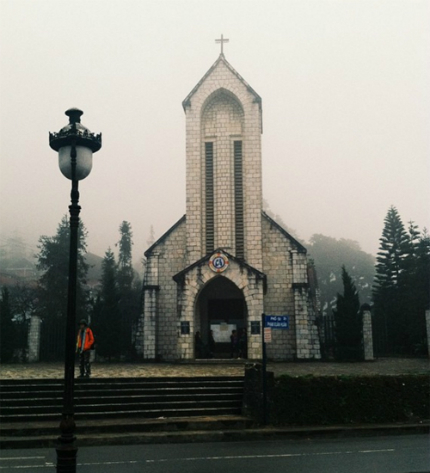 |
The Sa Pa Rock Church was built in 1895 and is the most ancient architectural work of the French left in Sa Pa, one of the most famous tourist sites in northern Vietnam.
The church is located in a prime location, shielded by Ham Rong Mountain on the back, facing a large, flat area, which is home to colorful festivals of the mountain town.
The cathedral is in the center of Sapa town, so it can be observed from the four sides, along with two other buildings built by the French – Chu Cau mansion (now the Hoang Lien Hotel) and the former district office (now the headquarters of the Lao Cai Tourist Information Center), forming a triangle with French architectural style.
The shape and architecture of the church was built like a cross, in Roman Gothic architecture, which is reflected through the roof, the bell tower, and the arches...
The church includes seven spacious rooms of more than 500 m2, with the 20 m bell tower and a bell of 1.5 meters high, cast in 1932, weighing 500 kg and resonating within a radius of nearly one kilometer.
With a total area of more than 6,000 m2, Sa Pa church has enough room for all functional spaces.
Choosing the direction of the church has important spiritual significance for Catholics. The church faces the east, towards the rising sun to welcome the light of the God. At the end of the church (the bell tower) is the west, the birthplace of Christ.
The whole church is built of hewn stone (walls, floors, bell tower, the church yard, surrounding embankments), which are connected by a mixture of sand, lime and molasses.
In May 2006, Sa Pa parish officially named a formal and permanent pastor after nearly 60 years without any priest. The cathedral has been embellished and preserved.
Ham Rong Mount
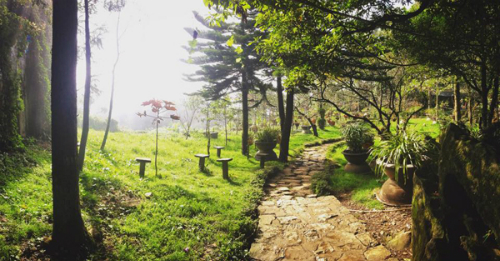 |
Shaped like a dragon’s head dimly looming in the thin veil of the early morning, Ham Rong (Dragon Jaw) Mountain is a fine combination of man-made and natural landscape in the center of Sapa town.
Ham Rong is home to numerous kinds of flowers and orchard gardens. Wandering stone paths leads tourists to wild peach forest, then orchid gardens with more than 6000 orchid plants belonging to 194 kinds.
In addition, there are indigenous and exotic flowers grown along the paths like Lily of the Nile, hydrangea, geraniums, ox-eyed daisy and cheery blossom. Mountain fruits like peach, plum, and pear are also found here.
The scenery hidden in the fog and sounds from bamboo flutes of Mong minority boys transform it into a heaven on earth.
Another interesting activity is conquering San May (Cloud Yard), the peak of Ham Rong Mountain at the altitude of 1800m to enjoy the imposing panorama of Sapa town. In sunny days, from here tourists can even see the peak of Fansipan under clear sky with white cloud floating around. Along the way to San May, tourists may drop by Cong Troi 1, Cong Troi 2 (Heaven Gate1 and 2) for resting and photo taking. These places also offer visitors a great view to French villas and terraced fields below.
The foot of Ham Rong Mountain is only a short walk from Sapa church.
Cat Cat Village
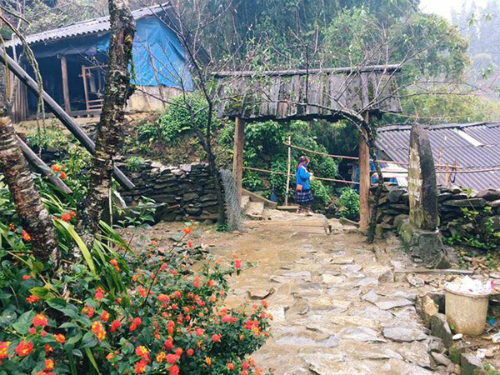 |
Cat Cat Village is about 1 km from Sapa town. It's located in Muong Hoa Valley and near the stunning Cat Cat Waterfall. This is an age-old village of H'Mong ethnic group with unique customs and practices that have been lost in other villages.
The village was formed in 19th century by the gathering of some families belonging to some ethnic groups living in mountainous areas of northern Vietnam, especially Black H’Mong .They lived next to each other along the mountain side and cultivated surrounding their home. Rice and corn were grown in terraced fields, while traditional handicrafts such as twisting flax and weaving fabric have been well-kept.
Visiting Cat Cat, tourists will be impressed by the peacefully picturesque scenery. People can easily catch sight of women sitting in front of the loom with colorful pieces of brocade, while children play around with pets or even livestock.
From the plain brocade, women carefully dye them with special leaves and embroider beautiful patterns of flowers and animals on them. Moreover, many residents of Cat Cat Village are also skilled at manipulating sophisticated gold and silver jewelry.
The original architect of H’Mong people is interesting as well. Their house typically contains three rooms with three doors and po mu wood roof, while the walls’ material is sawn timber. There are other parts of the house such as altar, kitchen, places for keeping food and sleeping, etc.
Cat Cat Village gives tourists a chance to have a glimpse into the daily life of local ethnic people, as well traditional activities such as weaving fabric. It is also a good opportunity to purchase some traditional souvenirs and handicrafts right from the craftsmen. People can also try some local food selling the way upcoming to the hill.
In addition, the road leading to Cat Cat Village is an easy and interesting route for trekking. The spot is only 20-30m minutes walk from Sapa centerand the hike through mountains will offer tourists the wonderful picture of rice paddies, waterfall, and water buffaloes grazing leisurely.
Lao Chai – Ta Van
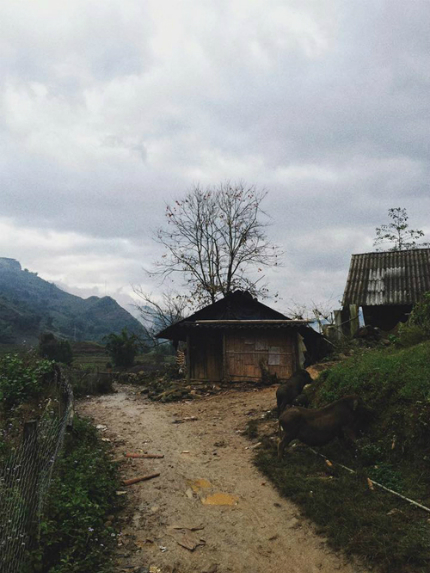 |
The village of Lao Chai is a rest spot for tourists trekking onwards to the village of Ta Van.
Lao Chai village is 6 km far from Sapa centre. The village is home to the black H’mong people. It is also the beginning of the Muong Hoa valley. Here you will enjoy the fresh air, see terrace fields, streams and visit and discover some of the H’mongfamilies.
Ta Van is located peacefully in the valley of Muong Hoa. Residents are mainly the H’Mong ethnic, Giay, and Red Dao… with approximately 1000 people.
The road to Ta Van village is small and narrow. Along two sides there is a fertile terraced field of corn and rice. When visitors come to Ta Van village, they will be amazed at the simple beauty of the houses in the village. Previously, Ta Van was based on the customs and characteristic of the Giay in Lao Cai. They live together at the bottom, near the mountains, the valleys, along streams.
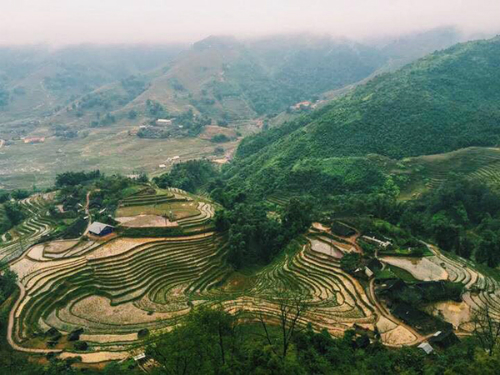 |
| Muong Hoa valley |
Growing rice is the major profession of the Giay. Besides, they also produce instruments and engraved silver. They live in both stilted houses and common houses with a solemn central part which serves as a place for ancestors' altar and guest reception. The Giay have their own fairy-tales, poetry, proverbs and riddles.
Costumes of the Giay are simple: womenwearcloth bag with embroidered flowers; man wears pants and shirt. Some special dishes of ethnic Giay are: roast fish of Muong Hum, horse meat of Muong Khuong, sticky rice of Van Ban… there are also festivals and folk games of the Giay: Nao Cong, Roong Pooc.
Sapa ancient rock field
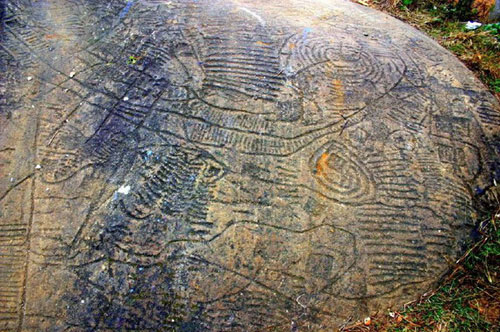 |
The Sapa ancient rock field in Muong Hoa Valley, Sapa district is a mysterious and invaluable relic, which Vietnamhas proposed to receive UNESCO recognition as a world cultural heritage site.
This 8sq.km area consists of large multi-grade rocks engraved with ancient images. It was discovered by a Russian-French archaeologist of the French School of the Far East in 1925.
There are nearly 200 rocks of various dimensions concentrated in the area. Hon Bo, which is 15m long and 6m high, is the biggest rock. The engravings on the surfaces of the stone are either pictographic or decorative. Remarkably, among the engravings are drawings of humans, stilt-houses of ethnic minorities and symbols believed to be a primitive form of writing. But their meaning has not yet been deciphered.
In addition, impressive images include a da chong (the husband stone), da vo (the wife stone), as well as stones that look like tigers and a stele with an incantation written on it by the carver to help his people defeat the tigers. The da chong and da vo tell the story of faithful love between a couple who overcame all difficulties to be together; even though they turned to stone, they are still dedicated to each other.
Archaeologists have proven that this area has been inhabited since ancient times. These fascinating Viet remains have drawn the attention of scientists and tourists.
The site was recognized as a national cultural relic in 1994.
O Quy Ho Pass
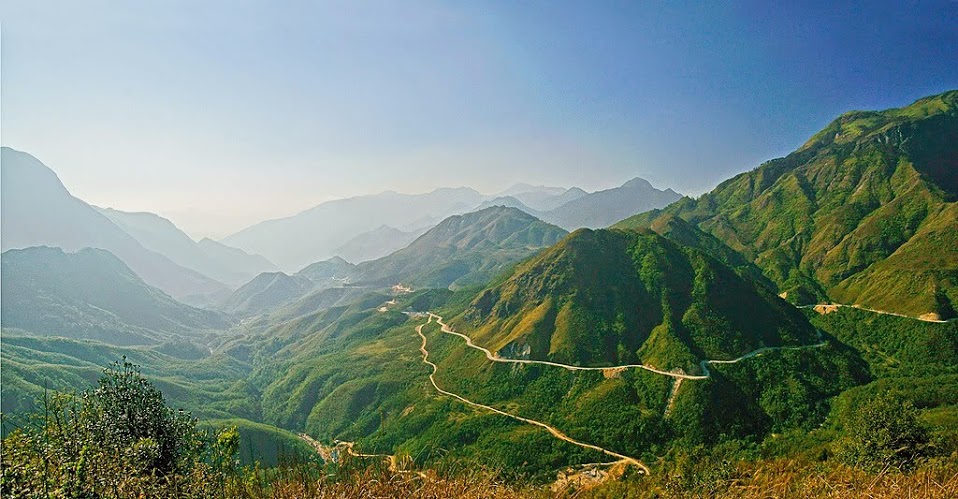 |
O Quy Ho is a mountain pass connecting two northern provinces of Lao Cai and Lai Chau, home to the magnificent Hoang Lien Range including Indochina's roof of Mount Fansipan with the height of 3,414 meters. It is also known as Hoang Lien Pass, but travelers having a strong love for the Northwest region prefer the name O Quy Ho.
Standing more than 2,000 meters above sea level, its top is covered with white clouds almost all year round, hence its poetic name “the Cloudy Mountain pass.” Its official name, O Quy Ho, is said to have come from a mythical bird that used to live in the area.
The pass is nearly 50 kilometers long encompassing two thirds of Lai Chau's Tam Duong District, and one third of Lao Cai's Sapa District. Tourists will have to cover a few kilometers from Hoang Lien National Park gate to come to the top of O Quy Ho Mountain considered the border between Lao Cal and Lai Chau.
Tourists will also have opportunities to enjoy impressive scenes of mountains and forests on the top of the Hoang Lien Mountain Range, and the Fansipan Peak.
In addition, the weather is one of the interesting features of the Northwest. In winter, if it is warm onthe side of Tam Duong, it is foggy and cloudy on the side of Sapa. On the contrary, in summer, if the side of Sapa has cool weather, it is sunny and dry on the side of Tam Duong.
Fansipan
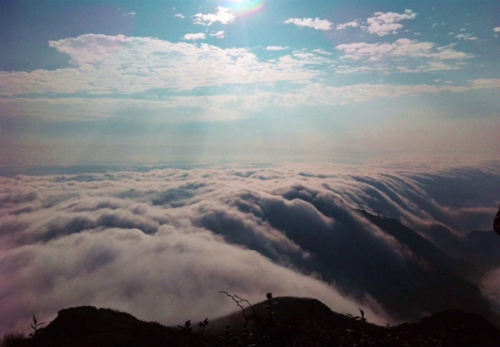 |
Instead of taking up to two to three days, now tourists can reach the roof of Indochina – Fansipan - after 15 minutes by using the newcable-car system.
Bars
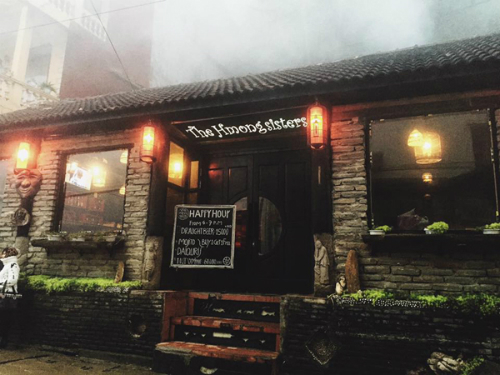 |
Bars like The H'mong Sister, Sapa Gecko Bar, and Mountain are destinations at night in Sapa, where tourists enjoy music and Western-style drinks.
What the stars mean:
★ Poor ★ ★ Promising ★★★ Good ★★★★ Very good ★★★★★ Exceptional
Latest News
More News
- New opportunities for cultural tourism (December 04, 2024 | 10:40)
- Ba Ria-Vung Tau sets eyes on tourism growth (December 02, 2024 | 16:51)
- Hanoi Old Quarter marks 20 years of national heritage status (December 02, 2024 | 16:46)
- Vietnam named World’s Leading Heritage Destination for sixth year (December 02, 2024 | 16:22)
- Hanoi's culture shines bright through night activities (November 30, 2024 | 10:00)
- Airlines lease more planes for Tet peak season (November 28, 2024 | 10:16)
- Exploiting business aviation to sustain the momentum of foreign investment (November 25, 2024 | 14:48)
- Tourism sector striving to meet year-end visitor targets (November 21, 2024 | 17:56)
- Ba Ria-Vung Tau has the allure for festive season (November 14, 2024 | 08:48)
- Airport Dimensions partners with SASCO to enhance lounge services (November 07, 2024 | 18:35)












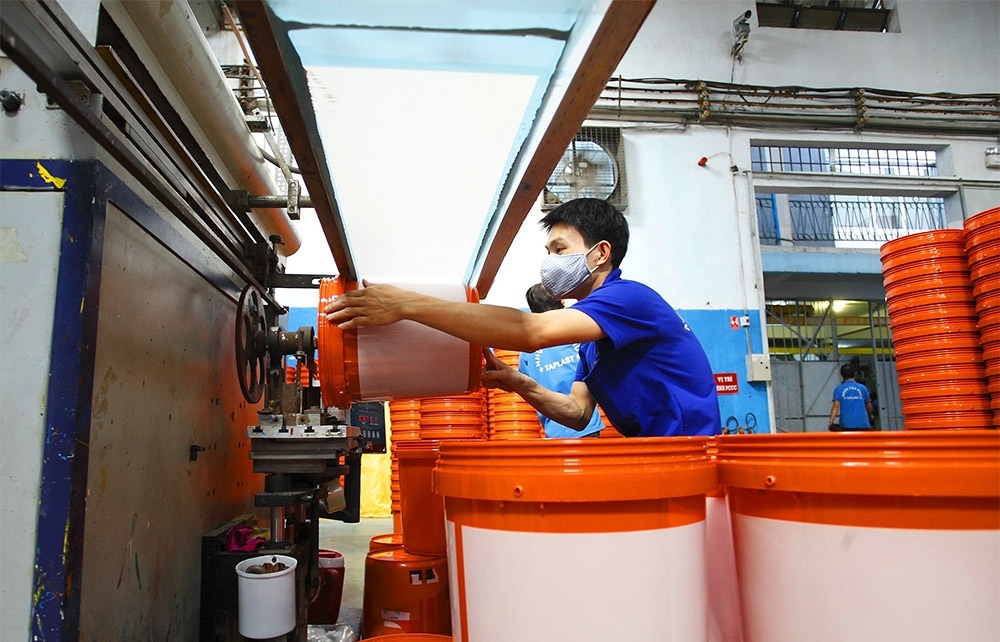






 Mobile Version
Mobile Version